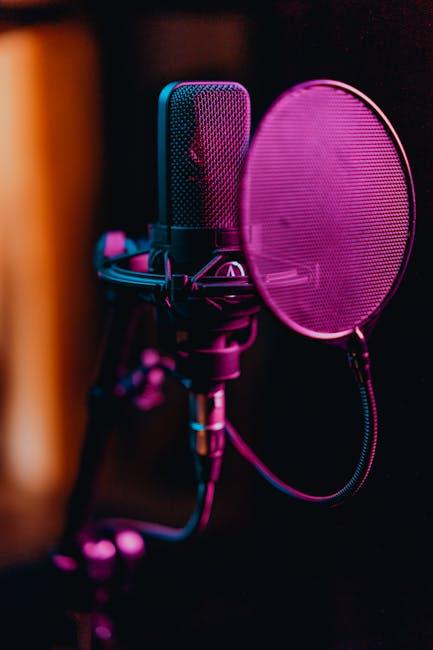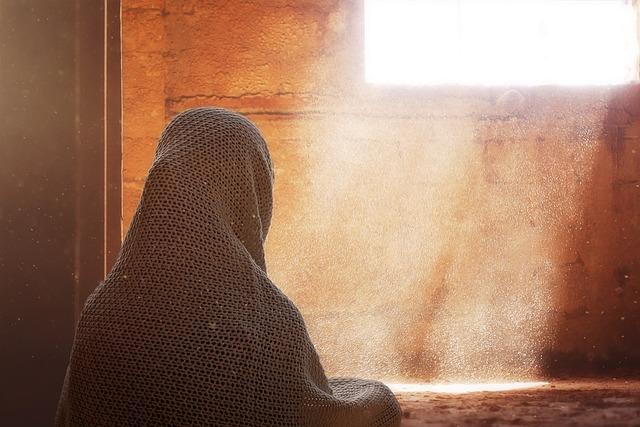In the dimly lit corridors of cinematic suspense, where shadows stretch and mysteries unravel, sound becomes the unseen architect of tension. Beyond the flickering frames and whispered dialogues, it is the meticulous craft of sound design that pulls audiences to the edge of their seats, heartbeats synchronized with the crescendo of a looming threat. In thriller films, sound is not merely an accompaniment; it is a powerful force, shaping the emotional landscape and guiding viewers through a labyrinth of anticipation and dread. This article delves into the intricate role of sound design, exploring how it masterfully orchestrates the symphony of suspense, turning silence into a scream and whispers into warnings.
Crafting Atmosphere: The Role of Soundscapes in Thrillers
In the world of thrillers, soundscapes are the invisible architects of tension. They craft an immersive experience that draws viewers to the edge of their seats. The meticulous layering of ambient sounds, from the subtle rustle of leaves to the distant echo of footsteps, transforms ordinary scenes into heart-pounding moments. Sound design is more than just an auditory backdrop; it’s a crucial storytelling tool that shapes the emotional landscape of the narrative.
- Atmospheric Sounds: Whispers of wind, creaking doors, and distant thunder create an unsettling ambiance.
- Silence: Strategic pauses heighten suspense, allowing viewers to anticipate the next move.
- Music: Eerie melodies and dissonant chords underscore pivotal scenes, amplifying fear and uncertainty.
By manipulating these auditory elements, filmmakers guide the audience’s emotions, intensifying the psychological impact of each twist and turn. The artful integration of soundscapes transforms the thriller from a visual experience into a multi-sensory journey, where every whisper and crescendo propels the story forward.

Auditory Cues: Guiding Emotional Responses Through Sound
In the realm of thriller films, sound design operates as an unseen puppeteer, subtly manipulating the audience’s emotions. The strategic use of auditory cues can transform an ordinary scene into a heart-pounding spectacle. Consider the chilling effect of a slowly rising crescendo or the jarring impact of an unexpected silence. These elements are not merely background noise; they are meticulously crafted to evoke specific emotional responses.
- Silence: The absence of sound can be as powerful as any orchestral score, creating a sense of unease and anticipation.
- Low-frequency sounds: These can induce feelings of dread, tapping into primal instincts.
- Discordant tones: Uneven, unpredictable sounds can heighten tension and disorientation.
By weaving these auditory threads together, filmmakers can guide viewers through a rollercoaster of emotions, ensuring that every whisper, footstep, or breath is felt as much as heard. The result is a more immersive and visceral cinematic experience.

Silence Speaks: Utilizing Quiet Moments for Maximum Impact
In the intricate tapestry of thriller films, silence becomes a powerful ally, intensifying the viewer’s emotional journey. When the dialogue fades and the soundtrack hushes, the audience is drawn into a heightened state of awareness, anticipating the next move. This strategic use of quiet moments can amplify tension and create an atmosphere where every subtle sound, from a creaking floorboard to a distant whistle, becomes a character in its own right.
Consider the impact of these quiet intervals:
- Heightened Suspense: Silence can stretch time, making every second feel loaded with potential danger.
- Unexpected Twists: A sudden break from silence can jolt the audience, making twists more impactful.
- Emotional Depth: Quiet moments offer space for characters’ inner turmoil to resonate, deepening audience connection.
Skillful sound design manipulates these elements, crafting a soundscape where absence speaks louder than words, engaging viewers in a visceral, immersive experience.

Expert Techniques: Elevating Tension with Innovative Sound Design
In the realm of thriller films, sound design is an art form that transcends mere auditory experience, transforming it into a visceral emotional journey. Innovative techniques in sound design are essential for creating an atmosphere of suspense and unease. By manipulating sound elements, filmmakers can craft a psychological landscape that grips the audience. Here are some expert techniques that elevate tension:
- Layering Ambient Sounds: By blending natural and artificial sounds, designers can create a rich tapestry that hints at unseen dangers.
- Subtle Use of Silence: Strategic pauses in sound can heighten anxiety, making the viewer hyper-aware of the visual cues.
- Distorted Audio Effects: Using warped or reversed audio can disorient the audience, mirroring the protagonist’s confusion or fear.
- Dynamic Soundscapes: Transitioning between loud and soft sounds can mimic a heartbeat, synchronizing with the audience’s emotional rhythm.
By embracing these techniques, sound designers not only enhance the storytelling but also transform tension into an immersive sensory experience.

